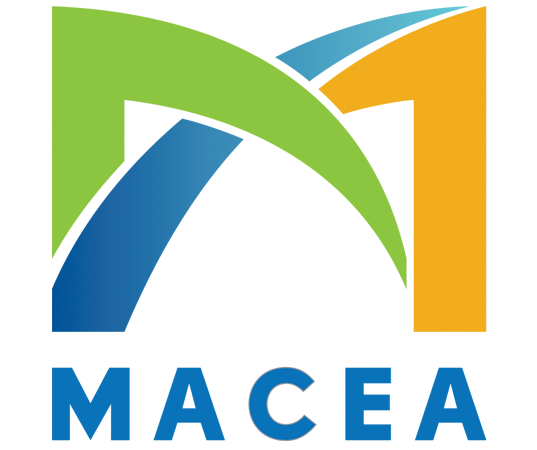Archives and Records Management Resources
| Listed here glossary, produced by the then National Archives and Records provider in 1984 for a contemporary Archives Reader: Basic Readings on Archival Theory and Practice, is supplied with this internet site as a help to individuals new to common archival terms. These definitions aren’t legitimately binding and don’t express NARA policy. The updated and much more comprehensive A Glossary for Archivists, Manuscript Curators, and Records Managers, compiled by Lewis J. Bellardo and Lynn Lady Bellardo, had been posted in 1992 and will be bought through the community of American Archivists. |
Archival terminology is really a group that is flexible of terms which have obtained specialized definitions for archivists. Since World War II, archivists global have actually devoted attention that is considerable the meaning of those terms. In 1964, a worldwide lexicon of archival terminology ended up being posted. (1) This dictionary in 6 languages, the job of a committee associated with Overseas Council on Archives, provides a foundation for worldwide contrast of archival terms.
The Society of American Archivists published its glossary that essay writing is own of terms in 1974 after years of debate, drafting, and review. (2) Definitions within the SAA glossary have now been commonly accepted due to the fact foundation for conversation of archival terminology in the united states and have now been the kick off point for subsequent efforts to define American archival terms. Since book of this SAA glossary, nonetheless, numerous archivists have actually determined that several of its definitions need modification and therefore additional terms must certanly be included. Instructors of archives management and writers of fundamental archival texts, consequently, allow us their glossaries that are own revise, up-date, or expand the 1974 work. At the moment, no glossary that is single of terms can be viewed definitive. (3)
The absolute most commonly used archival terms are the ones that describe documentary materials and archival organizations. Documentary materials may be characterized as “records,” “personal documents,” or “artificial collections” on such basis as whom created and maintained the papers as well as just just what purpose. (4) reports are papers in virtually any type which are made or gotten and maintained by a business, whether federal government agency, church, company, college, or other organization. A business’s records typically might consist of copies of letters, memoranda, reports, reports, photographs, and other materials generated by the corporation along with incoming letters, reports received, memoranda off their workplaces, as well as other papers maintained into the company’s files.
Contrary to documents, individual documents are made or gotten and maintained by a person or household along the way of residing. Diaries, news clippings, individual economic documents, photographs, communication received, and copies of letters written and delivered because of the person or household are among the list of materials typically present in individual documents.
Typically, records and individual documents have now been considered distinct entities, each with plainly characteristics that are definable. The physical qualities of records and personal papers have become more alike, however, and archivists increasingly have emphasized the similarities between these materials rather than their differences in the twentieth century. (5) In specific, today’s archivists notice that both documents and individual documents are figures of interrelated materials which have been brought together for their function or usage. Archivists respect and look for to keep the relationships that are established singular items in sets of documents as well as in individual papers. (6)
Artificial collections are basically various both from records and from individual documents. As opposed to being accumulations that are natural synthetic collections are comprised of individual things purposefully put together from a number of sources. Because synthetic collections comprise papers from numerous sources, archivists may elect to alter founded relationships to be able to enhance control or access.
Archival organizations are termed either “archives” or repositories that are”manuscript based on the kinds of documentary material they have and just how it really is obtained. “Archives” typically have now been those organizations in charge of the long-lasting care of the historic documents for the company or organization of that they are part. (7) numerous archives are public organizations accountable for the documents of continuing worth of a federal federal government or government human anatomy. The National Archives for the united states of america as well as the Public Archives of Canada are samples of general general public archives in the level that is national. Public archives additionally might be bought at almost every other standard of federal government, including state or province, county, and municipal amounts. Nonpublic or archives that are nongovernmental for the documents of any other institution or company of that they are a component. Church archives, as an example, administer the historic documents of a denomination that is religious congregation. University archives have the effect of documents of this college’s management. Archives get historical product through the action of legislation or through interior regulation that is institutional policy.
“Manuscript repositories” are archival organizations primarily in charge of individual documents, synthetic collections, and documents of other businesses. Manuscript repositories purchase or look for contributions of materials to that they don’t have any necessary right. They consequently must report the transfer of materials by deed of present or by other appropriate contract.
The distinctions between archives and manuscript repositories may be properly stated, yet few archival institutions are merely “archives” or “manuscript repositories.” Many archives hold some papers that are personal documents of other companies. Perhaps the National Archives regarding the united states of america is in charge of a little number of donated individual documents and nongovernment documents. Likewise, numerous manuscript repositories serve as the archives of one’s own organizations. In recognition with this, the word “archives” slowly has obtained wider meaning for a few archivists and it is employed by them in mention of any archival institution. This trend happens to be accelerated by way of your message “archives” or “archive” into the names of some organizations that in past times could have been termed “manuscript repositories.” (8)
Modern archival terminology provides a helpful and necessary way of specialized communication in the archival occupation. Its terms could be exact sufficient to protect essential distinctions among kinds of materials and archival organizations, yet its use can also be adequately versatile to mirror the changing nature of record materials and developments within the administration of archival organizations. Given that archival career grows and matures so that as brand new technologies and documents news affect the training of archives management, both the flexibility and precision of archival terminology will end up being of continuing advantage to archivists.
Glossary
This glossary of widely used terms that are archival located in component on and draws a few definitions from “A Basic Glossary for Archivists, Manuscript Curators, and Records Managers,” published by Frank B. Evans, Donald F. Harrison, and Edwin A. Thompson (The United states Archivist 37 July 1974: 415-433). The glossary includes many essential archival terms with specific definitions. Terms which are adequately described in dictionaries; technical manuscript, documents administration, and conservation terms; and terms associated with automatic information processing aren’t included.
ACCESS The archival term for authority to have information from or even perform research in archival materials.
ACCESSION (v.) To move real and appropriate custody of documentary materials to an archival institution. (letter.) Materials utilized in an archival institution in a single accessioning action.
ACCRETION An addition to an accession.
PURCHASE The process of distinguishing and acquiring, by contribution or purchase, historic materials from sources outside the archival institution.
ADMINISTRATIVE VALUE the worth of documents when it comes to ongoing company of this agency of documents creation or its successor in function.
APPRAISAL The process of determining whether documentary materials have actually enough value to warrant purchase by an institution that is archival.
ARCHIVAL ORGANIZATION an organization keeping appropriate and real custody of noncurrent documentary materials determined to have permanent or continuing value. Archives and manuscript repositories are archival organizations.
ARCHIVAL VALUE the worthiness of documentary materials for continuing conservation in a institution that is archival.
ARCHIVES (1) The noncurrent documents of a company or organization preserved for their continuing value. (2) The agency accountable for choosing, preserving, and making available documents determined to own permanent or value that is continuing. (3) The building by which an archival organization is situated.
ARCHIVES MANAGEMENT The expert handling of an archival organization through application of archival concepts and methods.
ARCHIVIST The expert employee within a archival institution accountable for any facet of the selection, conservation, or utilization of archival materials.
ARRANGEMENT The process that is archival of documentary materials prior to archival concepts.
GATHERING POLICY A policy founded by an institution that is archival subject matter, schedules, and platforms of materials to get for contribution or purchase.
COLLECTION (1) a synthetic accumulation of materials specialized in a solitary theme, individual, event, or sort of document obtained from many different sources. (2) In a manuscript repository, a human body of historic materials concerning someone, household, or company.
COLLECTION DEVELOPMENT The process to build an organization’s holdings of historic materials through purchase tasks.
CONTINUOUS CUSTODY (1) In modern U.S. use, the archival principle that to ensure archival integrity, archival materials should be either retained because of the producing organization or transferred straight to an archival institution. (2) In British use, the concept that noncurrent records needs to be retained by the organization that is creating its successor in function to be viewed archival.
CUBIC FEET (or METERS) a measure that is standard of amount of archival materials in line with the number of room they occupy.
DEED OF PRESENT a document that is legal contribution of documentary materials to an archival organization through transfer of name.
DEPOSIT CONTRACT A legal document supplying for deposit of historic materials in physical custody of a archival organization while legal name to your materials is retained by the donor.
DESCRIPTION the entire process of developing intellectual control of holdings of an archival organization through planning of finding aids.
DISPOSITION The action that is final sets into impact the outcome of a assessment choice for a few documents. Transfer to an archival organization, transfer to a documents center, and destruction are among feasible dispositions.
DISPOSITION SCHEDULE guidelines regulating retention and disposition of present and noncurrent recurring documents group of an organization or agency. Also referred to as a RECORDS CONTROL SCHEDULE.
REPORT Recorded information no matter kind or medium with three elements that are basic base, impression, and message.
DONATED HISTORICAL MATERIALS historic materials moved to an archival organization via a donor’s gift as opposed to according to legislation or regulation.
EVIDENTIAL VALUE the worth of documents or documents as documents regarding the operations and tasks regarding the records-creating company, organization, or specific.
FIELD PERFORM The activity of identifying, negotiating for, and securing historic materials for an archival institution.
CHOOSING AID A description from any supply providing you with information regarding the contents and nature of documentary materials.
HOLDINGS All materials that are documentary the custody of an archival organization including both accessioned and deposited materials.
INFORMATIONAL VALUE the worth of documents or documents for information they have on people, places, subjects, and things except that the operation for the company that created them or even the tasks of this family or individual that created them.
INTRINSIC VALUE The term that is archival those characteristics and traits of completely valuable documents that produce the documents inside their initial real form the sole archivally acceptable form of this documents.



